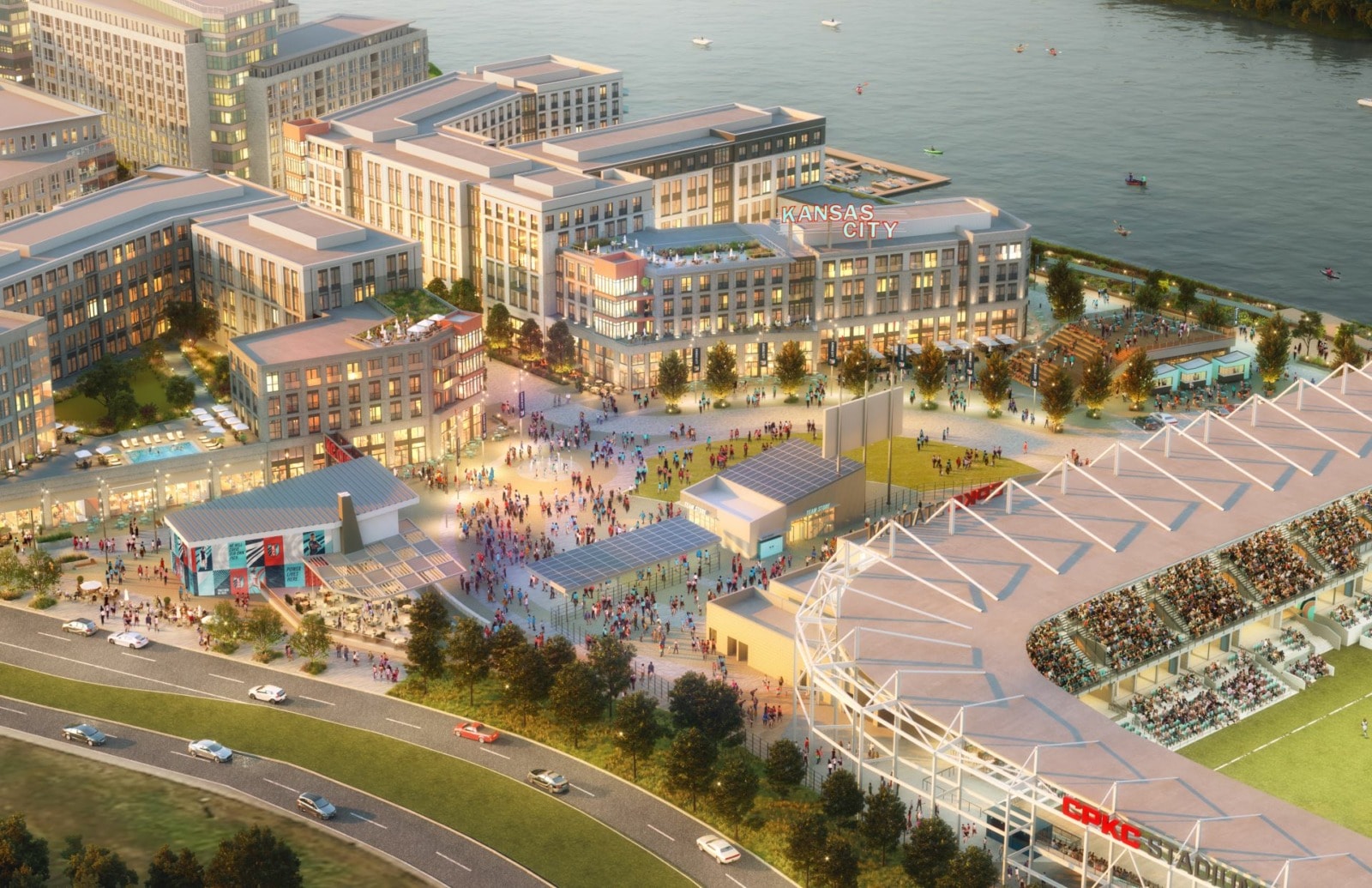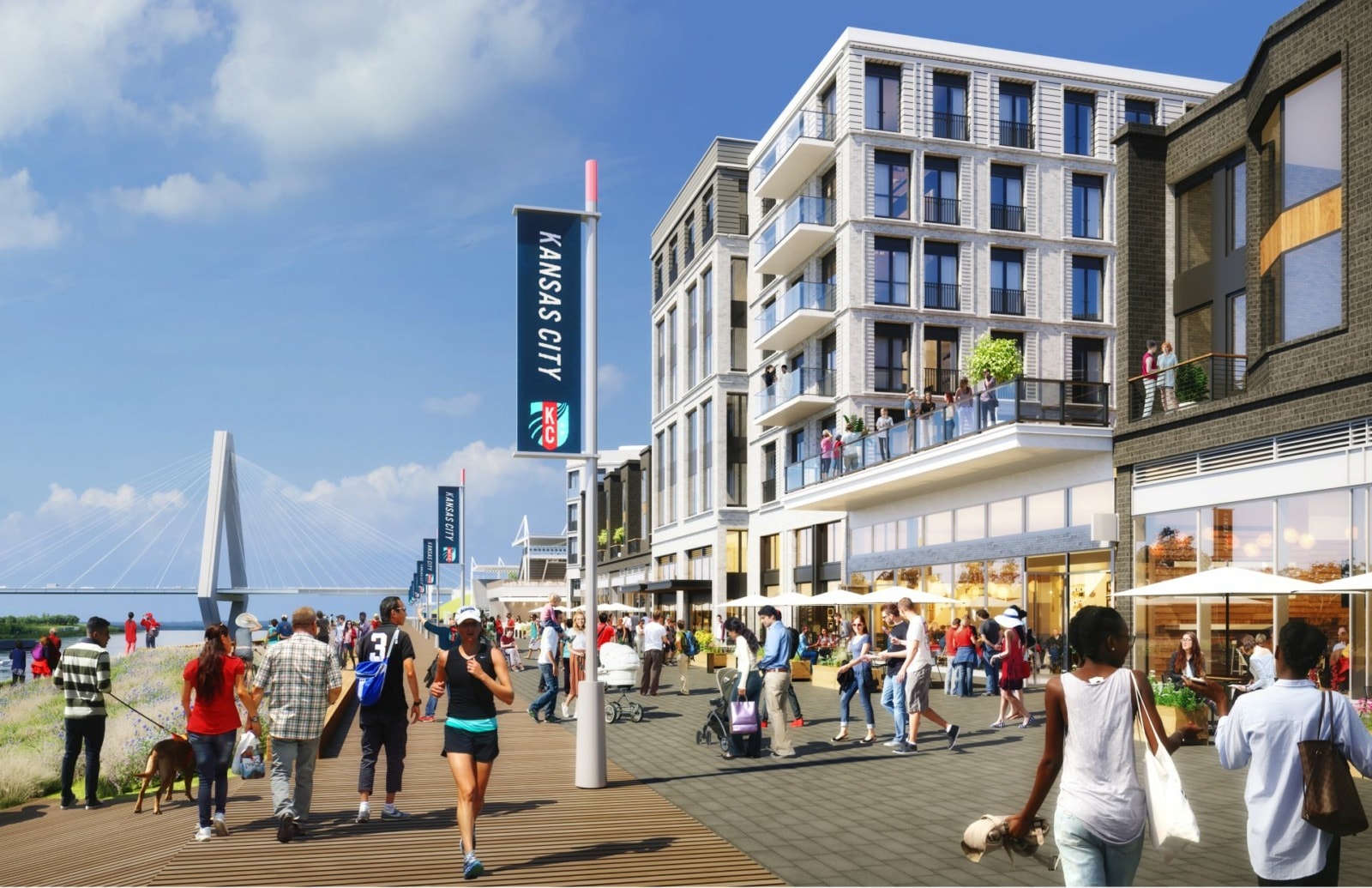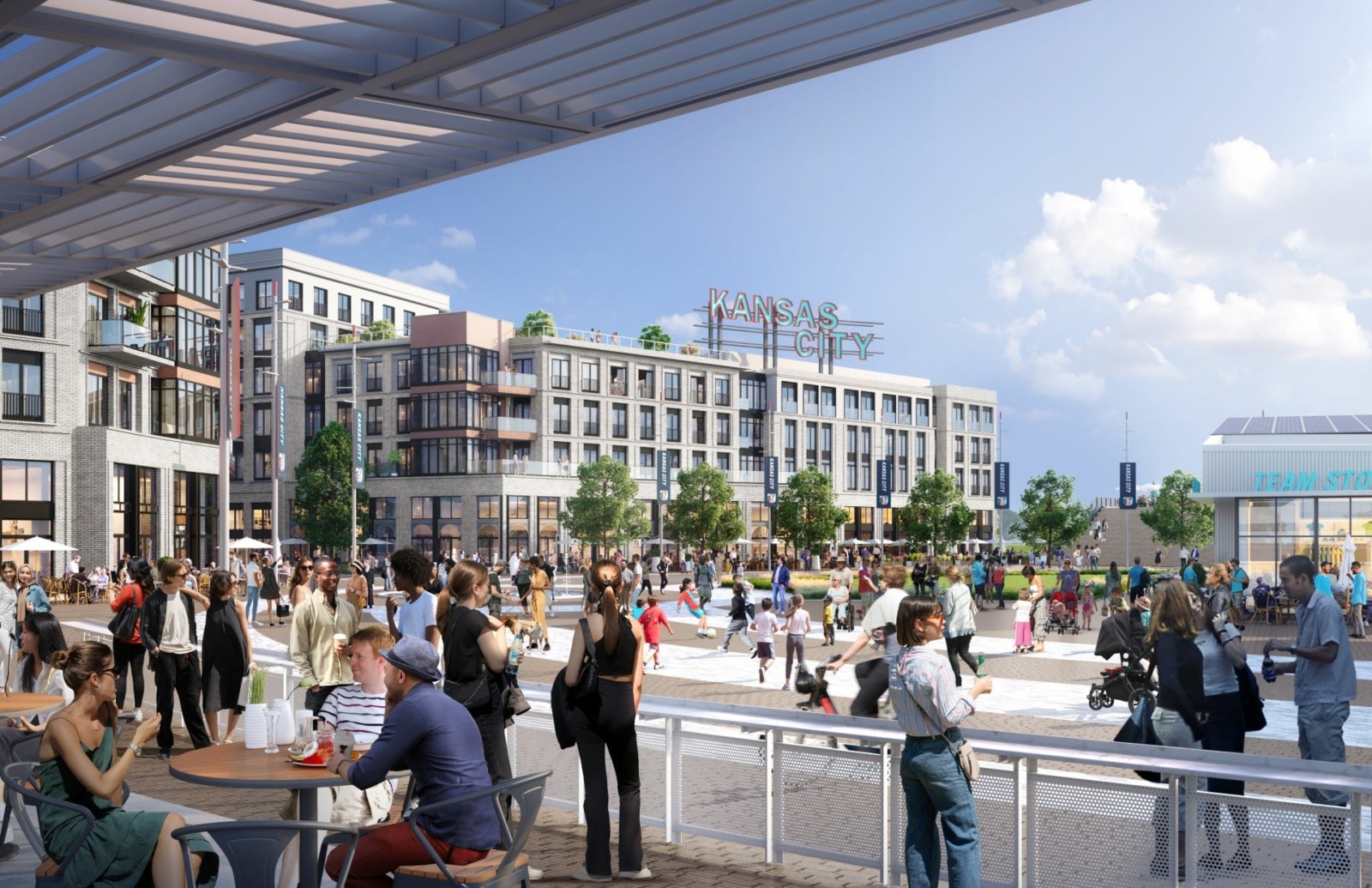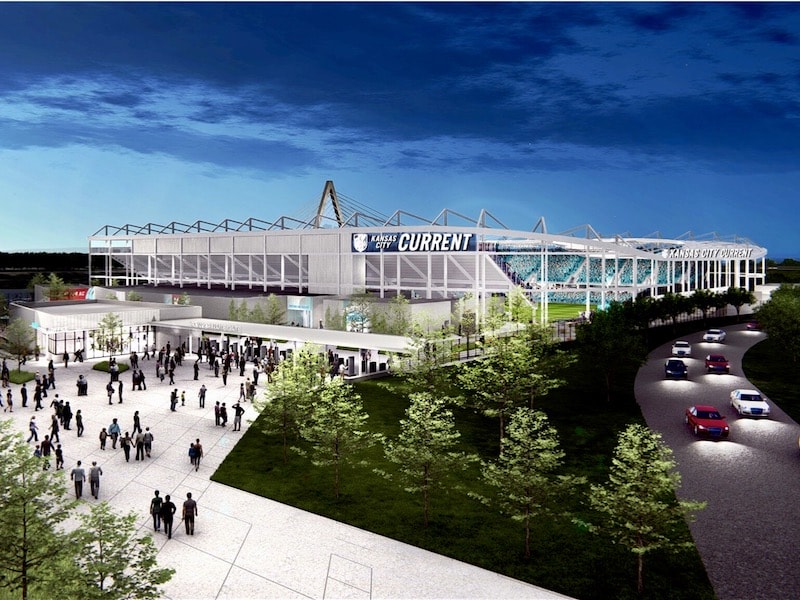Port KC Approves Massive Project Next to KC Current Stadium First Phase of 10-Year, $650 Million Plan
Published April 23rd, 2024 at 11:37 AM
Above image credit: A 10-year development plan next to the new KC Current stadium is expected to include more than 1,000 apartments, 210,000 square feet of office space and 53,000 square feet of retail covering 10.7 acres. (Courtesy | Perkins Eastman)A $200 million project that will include 400 apartments along with retail space around a town square is expected to begin work this year next to the new KC Current riverfront soccer stadium.
The project is the first phase of a 10-year development plan that is expected to include more than 1,000 apartments, 210,000 square feet of office space and 53,000 square feet of retail covering 10.7 acres when fully built out.
“It’s the first step in changing the mindset of Kansas Citians in bringing activity even closer to the water,” said Mukul Sherman, of Palmer Square Capital Management, at a meeting of the Port KC board Monday.
“We view from a design perspective this project to be pedestrian scale, to be really a European village right here in Kansas City.”
Port KC approved a master plan for what will ultimately be a $650 million mixed-use development last summer. The development team is comprised of an entity owned by Chris and Angie Long, co-owners of KC Current.

The $117 million, privately developed, women’s professional soccer stadium opened last month.
“We believe this foundational investment will benefit our community for years to come and cement the Berkley Riverfront as one of Kansas City’s great neighborhoods for residents and visitors alike,” Angie Long said.
The development is a collaboration between KC Current, Palmer Square, Marquee Development and Port KC. The national partners have expertise in major developments in Minneapolis, Cincinnati and Chicago.
It comes at a time when redevelopment along Berkley Riverfront Park has exploded in recent years.
In addition to the soccer stadium, more than 1,000 apartments have been added. A 120-room Origin hotel is opening in July, a beer garden in September and an extension of the streetcar is expected to be running in early 2026.
There also is a new pedestrian and bicycle bridge planned parallel to the Grand Boulevard viaduct leading to the riverfront.

At the same meeting at which the KC Current project was discussed, bonds also were approved by Port KC for a 150-unit, $41 million addition to the CORE apartment project built by Northpoint Development.
“You heard this would be a walkable, multi-modal stadium that would be a catalyst for more development, it would not be a stadium that is just sitting by itself,” Jon Stephens, Port KC president and CEO, told the board.
“This is going to be arguably one of the most vibrant, active neighborhoods in our city.”
The $200 million first phase is expected to be completed in time for the 2026 World Cup soccer tournament.
The architect is Perkins Eastman, a firm that’s designed waterfront and transit-oriented projects in Washington D.C., Minneapolis and New York City.
“We are creating an experience on par with some of the best waterfront redevelopment projects in the country,” said Chris Long.
The apartment development will reserve 10% of its units as affordable to residents earning up to 50% of the area median income. That same formula is expected to apply to all the housing in future phases.
In addition to the four- to six-story development, the design will include a town square and riverfront promenade. It is expected to include parking for residents and fans attending activities at the adjoining stadium.
The project will also include space for 10 restaurants and retailers.
“Food and beverage offerings will showcase local restaurateurs,” according to a release.
“The public gathering areas will be programmed year-round with family-friendly events like movie nights, food festivals, fitness classes, live music and more,” it added.

Port KC has granted the developers a 15-year property tax abatement for the commercial space, 70% for 10 years and 30% for five years; and a 15-year abatement for the residential component, 95% for 10 years and 90% for five years.
Because the land is publicly owned and doesn’t generate taxes currently, the development is still expected to yield $30 million for local taxing jurisdictions over 25 years.
The developer is also expected to contribute $35 million in infrastructure work including streets and utilities.
Flatland contributor Kevin Collison previously was founder and publisher of CitySceneKC.



